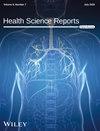Novel Tracheal Parameters Based on Quantitative Computed Tomography Assessment Reflecting Pulmonary Function and Eosinophilia in Patients With Asthma Who Demonstrate Persistent Airflow Obstruction: A Retrospective Observational Cross-Sectional Study
Abstract
Background and Aims
This study aimed to clarify relationships between tracheal parameters based on quantitative computed tomography (CT) assessment and clinical features in patients with chronic obstructive airway disease (COPD), asthma and COPD overlap (ACO), and asthma with persistent airflow obstruction.
Methods
Patients with obstructive airway diseases who underwent pulmonary function tests, chest CT, and laboratory examinations were categorized into COPD, ACO, and asthma with persistent airflow obstruction (obstructive-asthma) groups. The tracheal index (included in the saber-sheath trachea definition) and novel tracheal parameters measured at the same axial CT level, 1 cm above the aortic arch, as defined for the saber-sheath trachea, were analyzed.
Results
Saber-sheath trachea prevalence was 12.8%, 11.3%, and 1.5% in COPD, ACO, and obstructive-asthma groups, respectively. Significant moderate correlations were observed between the tracheal lumen area/body mass index (BMI) and peak expiratory flow rate (PEFR), and between the tracheal lumen area/BMI and functional residual capacity (FRC) in the obstructive-asthma group. In multiple linear regression analysis, PEFR and FRC were independently correlated with the tracheal lumen area/BMI. No significant moderate correlations were observed between tracheal parameters based on quantitative CT assessment and pulmonary function parameters in COPD and ACO groups. A moderate correlation was observed between the mean CT value of the tracheal wall and peripheral eosinophil count in the obstructive-asthma group.
Conclusion
Pulmonary function parameters and peripheral eosinophil count correlate with tracheal morphological changes based on quantitative CT assessment in asthma with persistent airflow obstruction, suggesting that airway remodeling in asthma induces tracheal morphological changes, regardless of the saber-sheath trachea.


 求助内容:
求助内容: 应助结果提醒方式:
应助结果提醒方式:


